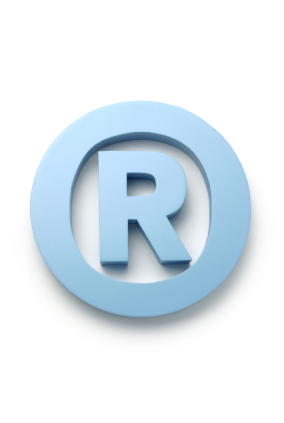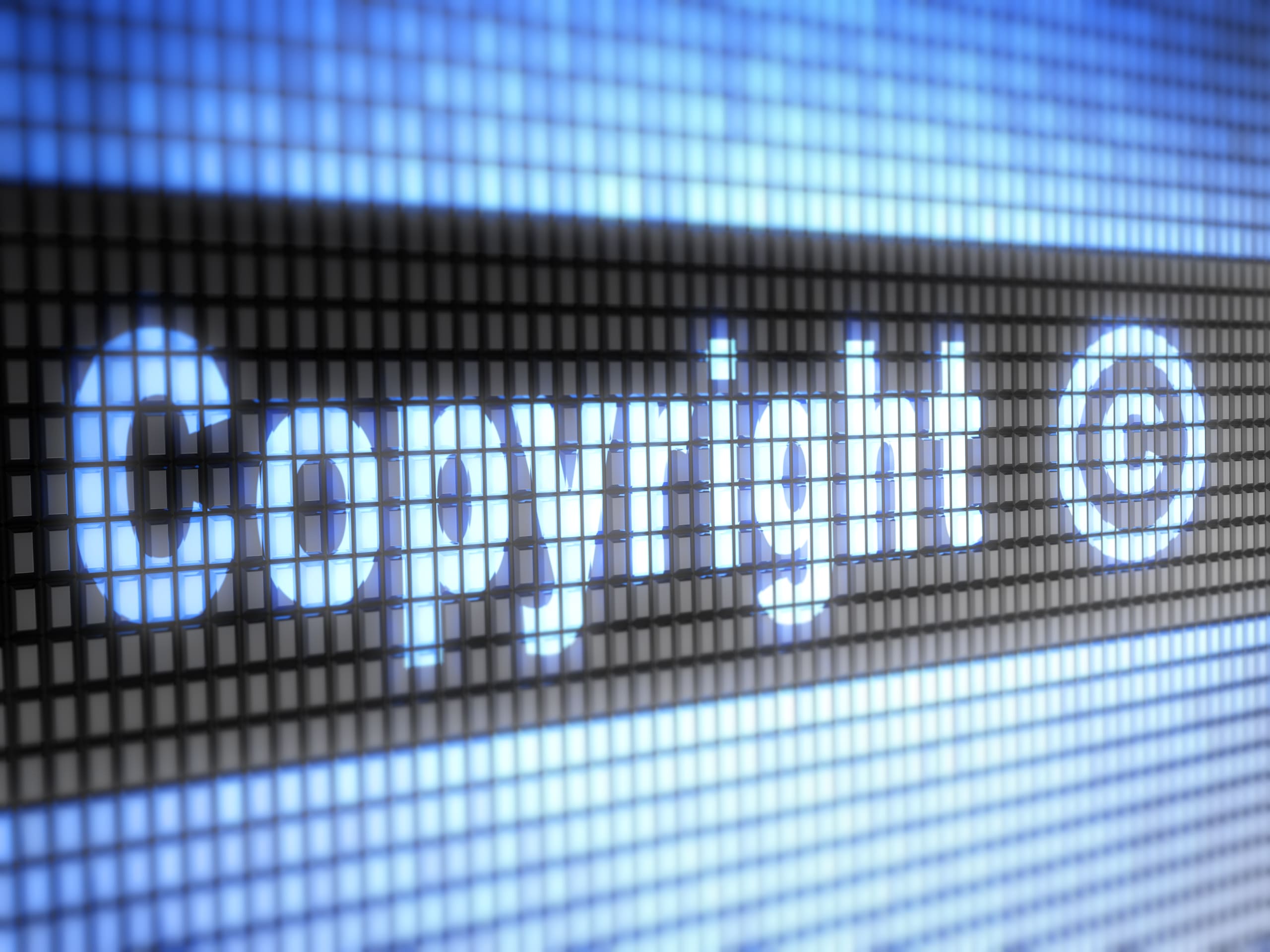Copyrights vs. Trademarks
Many people are confused by the difference between a copyright and trademark but it is simply boiled down to what are you protecting?
Trademarks protect any name, slogan or logo. It is distinct and identifies the source of your product or service. You can trademark the name of your company, your company’s slogan or logo.
Copyrights protect original works of an author that are fixed in a tangible format. Copyright protection applies to: literary works, musical works including lyrics, dramatic works including accompanying music, pantomimes, choreographic works, pictures, graphics and sculptural works, motion pictures, other audiovisual works, sound recordings and architectural works.
You CANNOT protect an idea, process, procedure, concept or principle regardless of how it is explained or captured in tangible form.
Patents in general protect inventions or processes.
Common Law Trademarks
You can claim Trademark and Copyrights without registering the item but common law Trademark and Copyrights are much more difficult to enforce. If you rely on a common law trademark you will not receive any of the benefits of a federal trademark registration. Even if another business is diligent in searching to see if someone else is using the name they want to use, they may not be aware that you are already using the name. Plus you will be in a much better position to prevent someone else from using your Trademark if it is registered.
Common Law Copyrights
When a work is created there is an automatic copyright created with the author of the work. Generally, the author has the exclusive right to reproduce the work, to prepare derivative works, to distribute copies or perform and display the work.
Works for Hire
Due to Common Law Trademarks and Copyrights, when a Trademark or Copyright is being created for a business it creates additional issues which need to be addressed. Since Trademarks (especially logos) and Copyrights are automatically assigned to the author, a copyright or work for hire must be assigned to the business by a written agreement. When a business hires an independent contractor or has an employee create a work for the business it is good practice to have an agreement ahead of time to document the arrangement as agreed. After the work is created the author must then sign an agreement signing over any rights to the work that was created. When you register the Trademark or Copyright you need to list the author or creator’s information and state that you have a written assignment to you and you may need to provide a copy.
Benefits of Filing for Trademark Protection

Trademarking your name, slogan or logo provides you with many benefits and puts you in a better standing to protect that Trademark from being used by someone else. Filing for Trademark protection gives the Trademark owner a nationwide priority to use the TM anywhere in the US. Filing a TM also provides notice to all businesses in the US that you are claiming rights to that name, slogan or logo. Registering a TM allows other businesses to easily search the USPTO data base to see that someone else is using the name and therefore, discourage them from using your TM. Filing also gives the TM owner the right to sue in federal courts, provides more remedies in the case of TM infringement, gives you the right to use the Registered Trademark symbol and allows you to file the TM in other countries as well.
Benefits of a Filing for Copyright Protection
When you register a copyright you are afforded additional benefits that a copyright owner would not otherwise have. Copyright registration provides notice to others that you have a copyright in the work you created. It automatically provides evidence that the copyright is valid (though this can be proven otherwise). Registration of the copyright is required in order to file suit to protect the copyright. It is also required in order to recover statutory damages and attorneys’ fees.
Choosing a Trademark
The more distinctive the Trademark the easier it is to protect. A made up word for a business name such as Kodak or Exxon are the strongest types of names to trademark. The weakest are descriptive names such as Best Plumbing. These types of names must spend years in the market and take on a secondary meaning in order to have protection. Keep this in mind when choosing your company name.

How to protect a Trademark
The best way to protect a Trademark is to first register it with the US Patent and Trademark Office (USPTO). This will give notice to the whole nation that you are claiming Trademark rights in your name, logo or slogan and it will afford you additional rights that you would not otherwise have. Even before you are approved by the USPTO you can place the symbol TM after the mark in order to inform the public that you are claiming Trademark rights in the name or symbol. After your application is approved, you can then use the “r” in the circle mark to indicate a Registered Trademark.
Trademark Searches
I highly recommend an extensive Trademark Search before filing the Trademark application. The way Trademark rights work is whoever is the first in time to use the mark has priority over anyone else who comes later to use it. Therefore, while registering the mark with the USPTO is highly beneficial it will not give you priority over anyone else who may have been using the mark before you, but did not register it.
A Trademark Search will not only examine existing and abandoned Trademarks registered with the USPTO but will also search for any similar marks being used across the nation. This is an exhaustive search of dozens of databases to determine if there are any potential conflicts. This is often called a Common Law Search.
Keep in mind, if your mark is rejected by the USPTO, they do not refund the filing fee.
Trademark Application Process
Once the application is submitted, the USPTO will examine your Trademark to verify that it is unique. Once it passes the examiner, it will need to be published once a week for 4 weeks to provide notice to the public. If no one contends the mark, then your mark will be approved. It can take anywhere from 6 months to 18 months with a typical turnaround of a year. But once filed you begin receiving benefits right away. If the application is denied, the determination may be appealed. There is no refund of the application fee if this occurs. That is just one reason why it is a good idea to do an extensive Trademark search before filing the application.
Trademark Renewal & Maintenance
Trademark rights are granted upon use. Therefore it is easiest to register a mark that is already being used. Use can simply mean handing out brochure or business cards or using the mark on your website or packaging for your products. Once registered, you must continue to use the mark or you risk losing any Trademark protection the mark has. 5 years from registration you must submit an affidavit of continued use. 10 years after you must file to renew the mark.
Trademark Monitoring
You should also be vigilant in checking to see if anyone else is using your mark and prevent them from doing so. If you see someone using your mark and you allow them to continue using it you may be waiving your rights to stop them at a later time.
Copyright Application Process
The best way to protect a Copyright is to register it with the Library of Congress. This will give notice to the whole nation that you are claiming Copyrights in the work. You can provide notice on the copyrighted work by providing notice of the work by using the copyright symbol ©, or the word “Copyright”, or the abbreviation “Copr.” and the year of first publication and the name of the owner of the copyright.

Length of a Copyright
In general, copyright protection lasts for the life of the author plus 70 years. There may be limitation to duration and certain rights in special situation.
How to Apply
Once the application is submitted, the Library of Congress will examine your Copyright to verify that it is unique. If the application is denied, the determination may be appealed. There is no refund of the application fee if this occurs.
Conclusion
If you have any interest whatsoever in protecting your Trademark or Copyright you should seriously consider registering it. Registration affords you more rights for protecting the intellectual property, it prevents others from affecting your good name and reputation and it creates an identity for your customers to recognize your business.
General Tips for Trademarks
-
Check your business name including: the USPTO database, the state, an internet search, check domain names before you register your company name with the state or use it as a sole proprietorship name with the county.
-
Don’t just file an application with the USPTO on your own. You may get a trademark registration, but you may be opening yourself and your business up to trademark infringement unless you do a full trademark search.
-
The TM office only searches those TMs that are registered with them, they don’t check any filings outside the TM database they have. Remember the common law rights above.
-
Once you start using a name a business owner has common law trademark rights, so they have priority in using that name for that type of business in their own geographical area
-
If you hire an attorney to do a trademark search it would actually help to protect you from such claims because you did your due diligence.
-
I recommend getting all versions of your domain name that you can, get the .net, .mobi, .co etc plus different variations of your name with a dash, without, abbreviations etc. This goes a long way to protecting your trademark from potential infringers.
-
I recommend you keep searching for other companies even after you are registered. This is called trademark monitoring. You must protect your registration so you should remain vigilant in keeping an eye out for others. Almost all my TM clients, including myself, have found people using the name after it was registered, many people simply don’t check the USPTO database before registering their company with the state.
